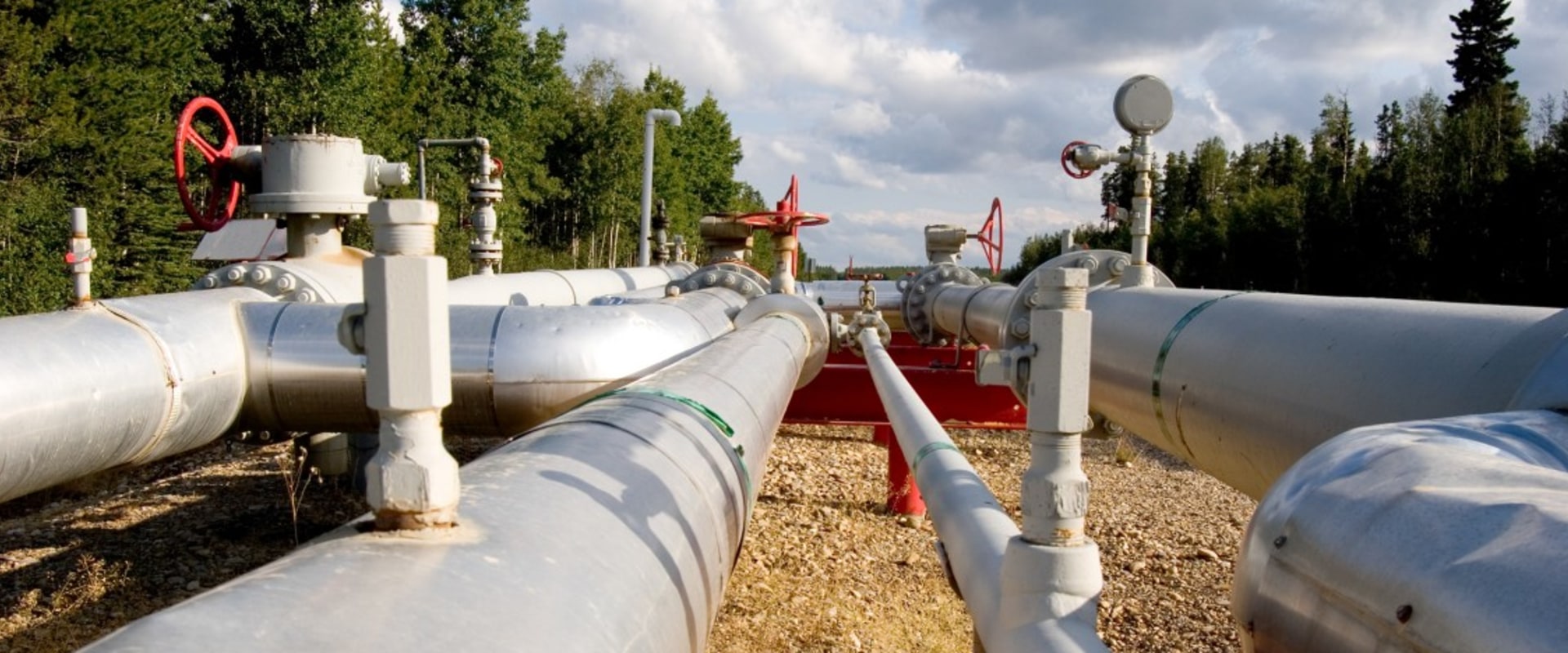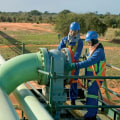Processing Natural Gas for Pipeline Transport Natural gas usually passes from natural gas and oil wells through a pipeline collection system to natural gas processing plants for treatment. From the inlet station, natural gas passes into distribution lines or pipes ranging from 2 inches to more than 24 inches in diameter. Within each distribution system, there are sections that operate at different pressures, with regulators that control the pressure. The utility company remotely controls some regulators to change pressures on parts of the system and optimize efficiency.
Generally speaking, the closer natural gas comes to a customer, the smaller the pipe diameter and the lower the pressure. Pipelines are made of steel or plastic pipes, which are usually buried. Oil is moved through the pipelines by pumping stations along the pipeline. Natural gas (and similar gaseous fuels) are pressurized into liquids known as natural gas liquids (NGL).
Natural gas pipelines are built with carbon steel. Hydrogen pipeline transport is the transport of hydrogen through a pipeline. Pipelines are one of the safest ways to transport materials compared to road or rail, and therefore, in war, pipelines are often targeted by military attacks. Natural gas pipelines transport natural gas.
Liquid petroleum (petroleum) pipelines carry liquid oil and some liquefied gases, including carbon dioxide. Liquid oil includes crude oil and refined products made from crude oil, such as gasoline, home heating oil, diesel fuel, aviation gasoline, jet fuels, and kerosene. Liquefied ethylene, propane, butane and some petrochemical feedstocks are also transported via pipelines. They play an integral role in the natural gas transmission system, which has proven to be the safest and most reliable way to transport natural gas.
In addition, in the event that natural gas is released from the compressor station, either during annual tests or during an emergency shutdown, natural gas, a mixture of hydrocarbons, mainly methane, will increase and dissipate safely as it is absorbed into the atmosphere because methane is lighter. that the air. Gas flowing from higher to lower pressure is the fundamental principle of the natural gas supply system. Most compressors in the natural gas supply system use a small amount of natural gas from their own lines as fuel.
Liquid propane gas and compressed natural gas, which are produced from natural gas, provide the convenience of natural gas to locations where pipeline distribution is not available. In addition to cutting off supply to Ukraine, Russian gas flowing through Ukraine, which included almost all supplies to Southeast Europe and some supplies to Central and Western Europe, was cut off, creating a major crisis in several countries that relied heavily on Russian gas as fuel. The U.S. UU.
is a complex structure that is used to transport natural gas to everything. The second reason is related to the operational behavior of some end user, such as a gas power plant with a different gas demand profile that can interrupt gas consumption to zero for a certain period of time on a weekly basis. When natural gas from a transmission pipeline reaches a local gas company, it usually passes through a gate station. However, the hydrogen concentration and gas ratio must be controlled to prevent damage to equipment operating with the gas mixture.
Natural gas (and similar gaseous fuels) are slightly pressurized in liquids known as natural gas liquids (NGL). For example, each station has an emergency stop system that stops the compression units, isolates and ventilates the gas pipes of the compression station, and diverts gas in the pipeline around the station. Since then, the United States has developed an extensive network of natural gas pipelines, consisting of more than 300,000 miles of transmission pipelines and more than 210 separate natural gas pipeline systems. Lifeline infrastructure includes gas and oil pipelines, water and sewage lines, oil and gas storage facilities, tunnels, power and communication lines, among others (Ariman and Muleski, 198), which are vital to modern society and urbanization.
Russian state-owned gas company Gazprom interrupted natural gas supply to Ukraine after talks between it and the Ukrainian government failed. . .




